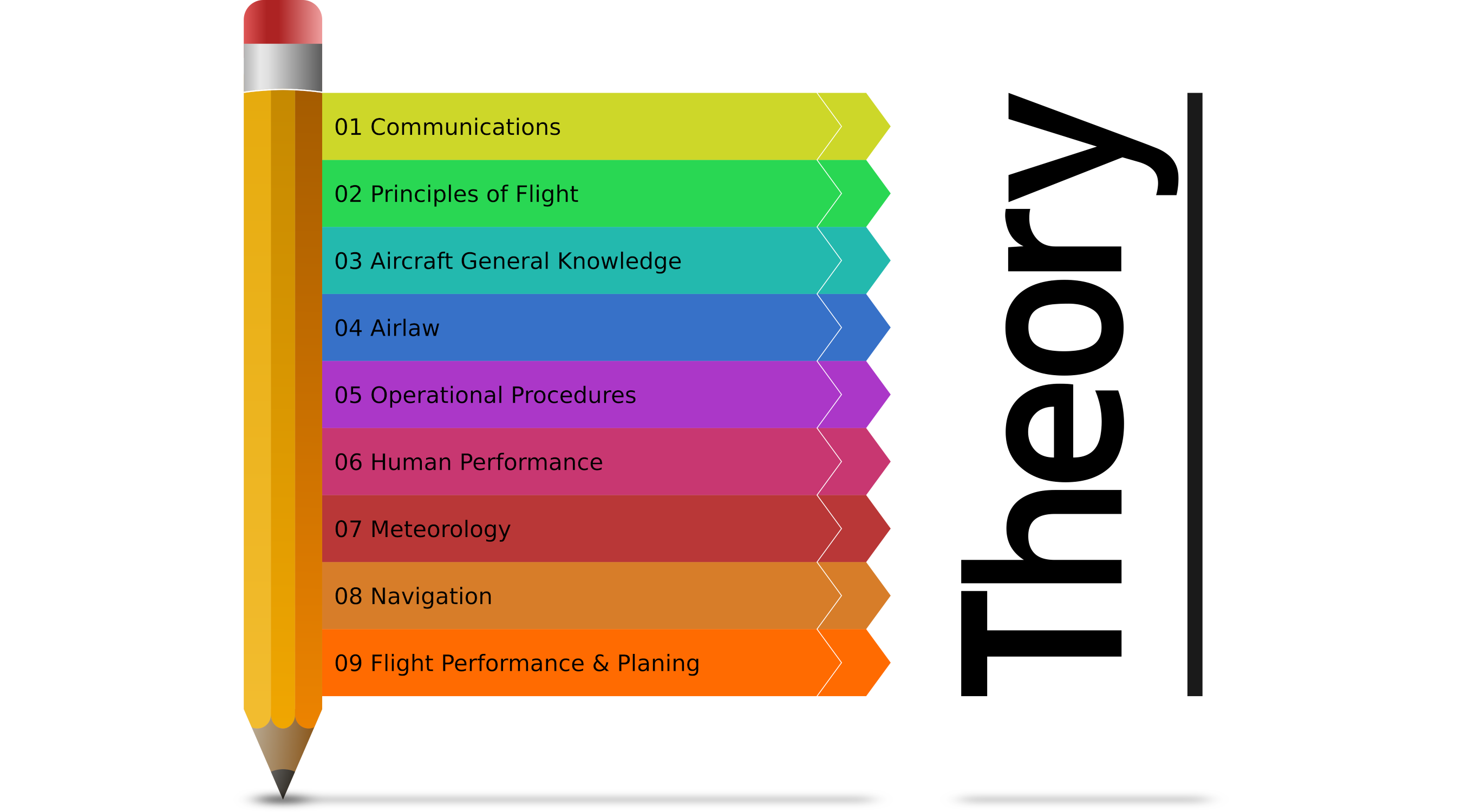PPL Theory Overview

Now I would like to give you an overview about the theory part of my PPL course. Please keep in mind that is only a little overview. Also it might vary from country to country and of course depending on your school.
Communications
As I already mentioned in my last post, learning how to communicate via radio is very important and we are doing this via the online portal radiocheck.at. Of course we had some lessons at school as well to ask additional questions and to practice with real people.
Principles of Flight
In this topic we learn how an aircraft flies. Therefore we started at the basics like air resistance and the Bernoulli Equation. We see the correspondence between lift and drag and what other forces act on the airplane when doing turns for example. Also parts of the aircraft are discussed which are needed to control the airplane (flaps, rudder).
Aircraft General Knowledge
An airplane consists of various parts. Fuselage, wings and controls surfaces are a few of them. There also quite a lot of different materials and construction methods to build a proper plane.
Of course general aviation planes have a lot of instruments inside too. We learn how they work and how to use them.
Airlaw
As everywhere else, also in aviation law is a very important topic. That’s why we learn what the underlying authorities are and where the laws come from.
But the most important things are the rules of the air. This includes the structure of the airspace and their classes as well as airspace restrictions. As PIC (pilot in command) you are fully responsible and that is why should know what you are allowed to do and what not.
Operational Procedures
In this topic we learn about emergency procedures and similar. As a pilot you should know what to do, for example if your engine stops running while the initial climb. This is very important because your life may depend on it.
But we also discussed standard operational procedures of the club WMW. Every club member should somehow behave in the same way when flying. This is similar to the big airlines like Lufthansa.
Human Performance
A very important factor in aviation is the human itself. That’s why we took a look at the human body with the main focus on the blood that transports oxygen in our body and the human perception. We also talked about psychology and stress.
Meteorology
This one is a huge topic. We started at the basics, the earths atmosphere and the ICAO standard atmosphere. Starting from this, we learned about the different cloud and precipitation types.
It is very fascinating how the climate builds up and how wind is created. Also very important is air pressure. This is important for performance and altitude measuring.
Navigation
In theory when you look at the aeronautical map, everything looks easy. But the world looks different from a planes perspective. That’s why we start at the basics, the coordinate system, measurement units, and some theoretical knowledge about maps. Of course we learn about the course scheme and how to correct the course due to wind influence.
We also learned the basics of radio communications. As VFR pilots we mostly navigate by looking out of the window. But radio navigation might help us if we get lost or as a general aid while flying.
Flight Performance & Planning
The performance of an airplane depends on multiple factors. We learned how the weather, mass and balance influence it and how to calculate it. This is important for fuel consumption, controllability of the plane as well as the take-off distance.
Then we talked about flight planning that will be especially important for cross country flights. This mainly consists of planning the final route and calculating the courses with wind correction. Of course you have to calculate how much fuel it will take you to fly from A to B.